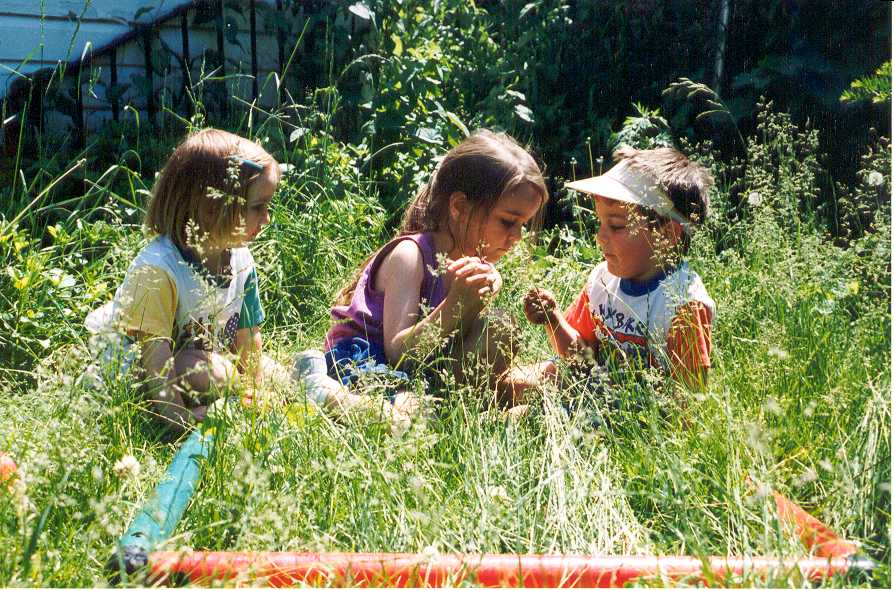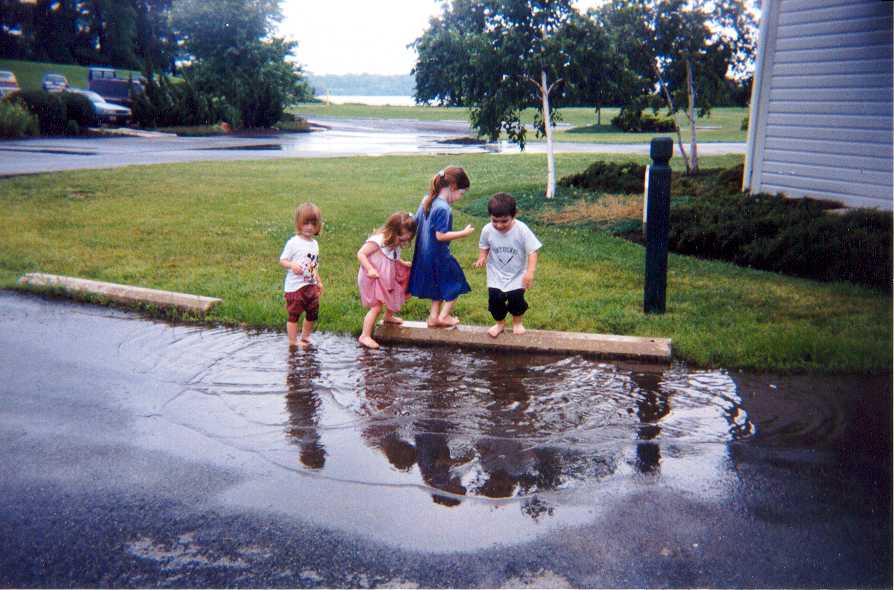



























































Nature Study
(Charlotte Mason's Cure for Tired Text-taught Tots)
“The unobservant person states that an object is light, and considers that he has stated an ultimate fact. The observant person makes the same statement, but has in his mind a relative scale, and his judgment is of more value be- cause he compares, silently, with a series of substances to which this is relatively light.” -- Parents and Children, pg. 183

Trip admirers a waterfall
Charlotte Mason (1842-1923) was a British educator and an observant woman. As a teacher, she spent much of her life watching children learn, and drawing, from her observations, many of the same conclusions we home educators draw today as we watch our own children learn. Nature study was a “must” for Charlotte’s students, and for those she influenced in their homes. She believed that children should be outside with a parent for 4-6 hours per day when they are young, and that older children (12 and up) should have at least one full afternoon a week devoted to outside activities. Meals should be taken out of doors, when possible. “Never,” she writes, “be within doors when you can rightly be without.” Today, at Charlotte Mason College (now part of St. Martin's College), the study of ‘outdoor education’ can earn you a master’s degree. Indeed, outdoor educations centers such as Frost Valley in NY, and PEEC in Pennsylvania, Hemlock Overlook in Virginia, Eagle Bluff in Minnesota, and many others, are popular ways that public schools bring a taste of the outdoors to their pupils. Ah, but as home-schooling families, we can make everyday an outdoor educational experience…

Charlotte’s image of the nature walk included the mother sitting on a large
blanket and sending the kids off to find what they can find. They would
return with their finds, or describe what they had seen to their waiting
mother. This might work well for you. Others may use a blanket as a “home
base.” I cannot help but walk with my children and find things. I don’t
want to miss anything on our nature outings, and my enthusiasm is
contagious. Either way is fine, I believe.
The kids love to find natural objects and learn from them what they can.
They keep notebooks, recording their interesting discoveries. They make
connections when they read about something they have seen on a nature walk.
They develop a strong, respectful relationship with life and its Creator.
Nature study becomes the basis for the study of all other sciences—geology,
biology, chemistry, physics, and astronomy can all be observed in nature.

Kids doing a quadrat study
Mount Holyoke College has a
lovely tradition: On a crisp October morning at 7am, the morning bells
continue to ring past 7, signaling that classes are cancelled. Because many
students choose to climb the local mountains on their day off, the day is
called “Mountain Day.” I have carried this tradition home, though we try to
have our “Mountain Day” once a month, as a special addition to our usual
time spent out of doors. Our “mountain” is a local preserve with several
different environments—fields, forests, pond, seashore, and even old ruins.
Best of all, it is free!
Mountain day is not a substitute for getting out daily! The mountain day
location is a special place, away from home, where we can observe the
seasonal changes, wild life, plants, and weather. Mountain day is a treat,
wildly anticipated by the whole family. Nevertheless, we still go out as
much as possible, on a daily basis.
When you plan your “mountain day” getaway, try to find a place that fits
this checklist:
Free, or low fee--perhaps there is a “family membership”
Nearby
Suitable for children
Naturalist available
Night access, if safe
Variety of environments:
No place has all of these environments, or course, but many parks and
preserves have several different areas to explore. Check with your local
parks department for advice. They can also tell you any rules and
regulations. Many preserves forbid collecting anything (a real let-down for
unprepared kids). Other places will make exceptions for “schools.” Still
other preserves require permission to use the area. While this may require
filing forms and a short waiting period, restricted areas are great since
they are never crowded.

This is not a cliché. Most back yards are teeming with wildlife of some
sort. As a city dweller, I never cease to marvel at the fine variety of
life in my yard. Spend time in your yard as you take meals, and see how
many kinds of bird, insect, plant, etc. that you see.
If you keep a perfectly manicured lawn, with only one kind of grass (need a
field guide to help you learn your
lawn?), you can make your yard more attractive to wildlife. Hang a
birdfeeder. Add a birdbath. Try piling up some old hedge clippings to make
a brush pile. Dig in the soil.
You might consider starting a ‘succession corner.’ Choose a small area.
Don’t mow, spray or treat the area. Watch. The grass will grow long, weeds
will grow, and young trees might sprout. Different insects will arrive.
After a few years, you might start a second succession area beside the
first, and see how much faster succession takes place. For more backyard
ideas, check out
MacBeth's
Opinion (a small bookstore, in association with Amazon.com), including
a "Swallows and
Amazons" page!
Charlotte encouraged her students to keep nature notebooks. The children
themselves always do the drawings, and the notebook may include poems,
narrations of the natural objects, and pressings of leaves and flowers. Any
blank notebook will do, provided it has room for our young naturalists’
pictures. Sometimes they draw right on the pages of the notebook. Sometimes
they draw on separate paper and glue it in later. Poems we find, and any
other hand written work is added neatly.
The work in a nature notebook is the child’s work, and is not subject to
correction. As the years pass, we notice natural improvement in the
drawing. As the child becomes a more accurate observer, so his artwork
reflects the change. He may never be an Audubon, but he will look back on
his work with fondness. A nature notebook is a great habit (Charlotte liked
habits) that can stay with us for life. Moms and dads can set an excellent
example for the children by starting their own notebooks…I have! Need help
getting started? Need hints on drawing natural objects? Try
Keeping a Nature Journal by Clare Walker Leslie. This wonderful
book has more suggestions that I could ever think possible, including hints
for "speed drawing." Also, I have enjoyed using watercolor pencils.
Try
Watercolor Pencil Magic for helpful hints on using these.

From my notebook, using water color pencils

From the note book of Trip Derham, at age 8
(This poor turnip really looked like this!)
The daypack for a nature walk can be quite a load to carry; let the kids
help. I like to bring plenty of equipment so that there are no missed
opportunities. The saddest words on a nature walk are, “Oh, if only we
remembered the binoculars!” or “I can’t go in the marsh because I’m wearing
my good shoes!” Be prepared for anything your area might have to offer.
Here is a quick checklist of items to pack:
General supplies for all fieldwork:
Supplies for Wetland study:
Supplies for Field/forest/desert:
Supplies for Geology:
See navigation bar at bottom for MacBeth's Opinion on equipment.
Remember: Boots are always shorter than the water into which you wade.
Always tell someone your plan--where you are going, and how long you'll be
gone!

after the rain
MacBeth's
Opinion (includes a wide selection of field guides and books on
natural history)
Wondering what to do beyond nature study? Try MacBeth's High School Science Opinion
More Derham nature photos (slow to download, but worth it!)
Back to 4 real learning




























